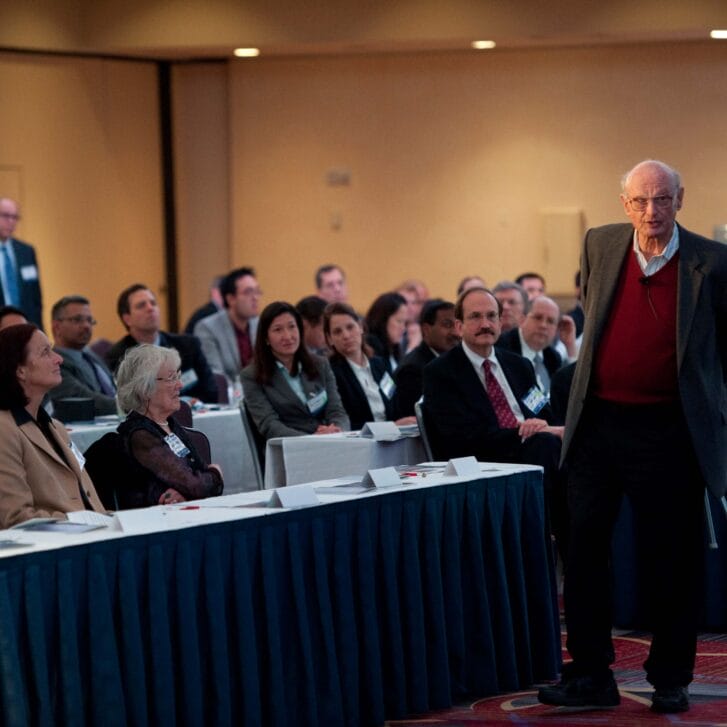The term “pivot” is popular in the startup world. Entrepreneurs whose initial ideas don’t work out are expected to pursue plan B. But what does it actually mean to pivot—and are entrepreneurs truly as open to doing it as they say they are? Wharton management professor Jacqueline “Jax” Kirtley, along with Boston University’s Siobhan O’Mahony, studied seven early-stage firms in the energy and clean tech sectors to take a closer look at how these strategic changes actually play out. Kirtley recently talked with Knowledge@Wharton about the findings in their paper, “What Is a Pivot? Explaining When and How Entrepreneurial Firms Decide to Make Strategic Change and Pivot.”
Knowledge@Wharton: The term “pivot” is pretty widely used, but can you talk a little about its origins?
Jacqueline “Jax” Kirtley: Its use as a specifically entrepreneurial term comes from Eric Ries and Steve Blank’s books on what’s now referred to as the “lean startup movement.” They talk a lot about how you can use the scientific method—making hypotheses about what’s going on in your entrepreneurial firm—because there’s so much uncertainty for entrepreneurs. They suggest that you can think about explicit hypotheses about what you’re doing and then test them.
When you test those hypotheses, they either get validated or they don’t. And what the lean startup movement is saying is, when your hypotheses are not valid—are shown to not be accurate—you should change. That’s where the word “pivot” came into entrepreneurship—this very specific methodology. But it has been picked up by everybody and their brother, and it’s not used that precisely anymore. Now, it’s used by anybody who wants to talk about how we’ve changed—we’ve pivoted, we’ve pivoted our strategy.
In the paper, I specifically refer to the example of Flickr. [Co-founder] Stewart Butterfield started out making a big online video game. And it didn’t work, so he changed from running a massive multiplayer online video game to Flickr, which is an image-sharing website based on technology that was part of the original game. We think of that as a pivot because it’s a massive change. The word “pivot” is very evocative. You think of basketball players who plant one foot and change direction but keep that one foot down. We usually think about that as the technology or the firm—there’s something you keep, but you change your direction completely.
So we all talk about pivots as if they’re big changes. But we also hear entrepreneurs talk about pivots as little changes. It has just become this ubiquitous, not-specific term, but it still has this very specific—or at least semi-specific—usage. So for me, I wanted to get down to, “Well, what is it really?” A lot of entrepreneurs will tell you, “We’re willing to pivot. We’re open to it.” But what does that really mean?
K@W: How were you able to study this question?
Kirtley: This paper is coming out of my dissertation study. I went out to the firms multiple times a year, talked to multiple people within the firms, and did interviews over several years.
All the firms in this study are doing some kind of novel knowledge—in many cases, right out of a lab, trying to take it to market in energy and clean tech. So these are very hard-science, very technologically advanced concepts that they’re trying to bring out—products and technologies. How does your strategy evolve? How does your technology evolve when you start a firm like that? I showed up on their doorstep every few months … to understand how things were changing.
What this gave me was the opportunity to see the before, during, and after of big decisions. If I can see the things that lead up to a decision—a big decision about your strategy, about changing your strategy, or pivoting—I can get a sense of what actually triggered a decision, and then, what are the things you’re thinking about during that decision?
K@W: When you say “changing the strategy,” is it changing that core belief or technology?
Kirtley: It’s changing something fundamental about what the firm is doing. So a change in the strategy might be: “Are we a service company? Are we a product company?” In this paper, I look at 93 different decisions where at least one of the options involved changing the strategy. And for these 93 decisions, most of the time—and that’s 72 decisions—they didn’t change. As an outsider, very often I was surprised by this. I thought change was the right thing to do.
That was actually one of the first things that this study found: As an entrepreneur, you have beliefs about the things you don’t know for sure—the uncertainties. If your beliefs don’t change, you don’t change your strategy. But every once in a while, in this case, they did change.
K@W: So in that minority of cases, what was going on?
Kirtley: What I can see in this data in some cases is what the entrepreneurs believed about what they didn’t know—the uncertainties they faced—as well as if they were contradicted. That could be, “My belief was wrong. I was wrong about this market.” Or, “I was wrong about the idea that partners would be willing to pay us or to work with us.” So there’s some belief that’s contradicted by new information. It might be that the belief is wrong, and it might just be that the belief doesn’t align with the strategy we have.
In those cases, the entrepreneurs exited something. They said, “Okay, this is not the right product,” and they stopped the product. When the entrepreneurs entered these decisions, they were triggered by the problems and the opportunities—new information that’s either unfavorable or favorable. The problems, when they affected their beliefs, led to these exits.
With opportunities, what I saw was, the beliefs expanded. So I believe that my microchip technology is going to change the world. Well, then I learn a new piece of information about how to build my product without a microchip. Instead of talking about how our microchip technology is going to change the world, as this decision process goes on, they say, “Our core technology is going to change the world.” Their beliefs expanded. They added to their strategy.
What kinds of choices are they making? They’re making an addition choice, or they’re making a subtraction and exit choice. But if you talk about a pivot, that’s bigger than one exit or one addition. A pivot is, “I’ve changed and redirected my strategy. I was a game company, and now I am a photo-sharing website.” That kind of change is actually an accumulation of adds and exits. They aggregate into this complete redirection.
K@W: It wasn’t that they all at once decided, “We’re just going to make this big pivot.” It was really a lot of different things going on over time that added up.
Kirtley: It’s not a basketball player who plants one foot and turns around completely and changes direction. It is a set of decisions over time—I was a product company that was focused on a number of different industries that could all use this energy device. And now, two years later, I will tell you that I am a service company with a set of products targeting one industry. That’s a pivot.
K@W: What do you think is the value for entrepreneurs, or even budding entrepreneurs, of understanding this process a little better?
Kirtley: It’s the idea that you can pivot and survive. Because most entrepreneurial firms fail. So knowing that there’s an alternative—a way to survive, a way to change and move forward—that’s a good thing.
Published as “Defining the Entrepreneurial Pivot” in the Fall/Winter 2019 issue of Wharton Magazine.

























